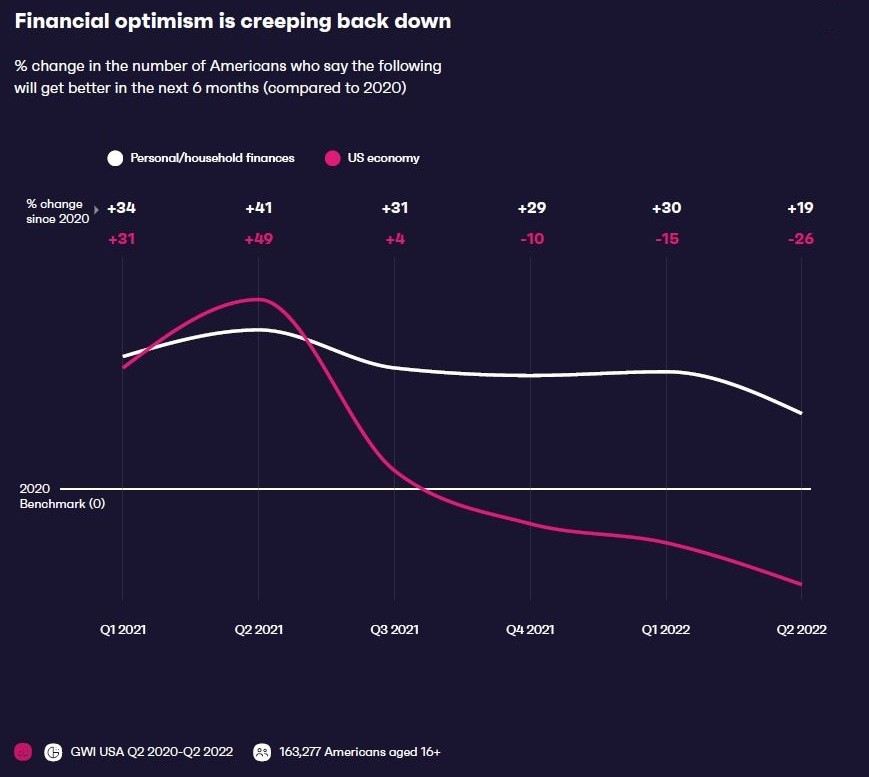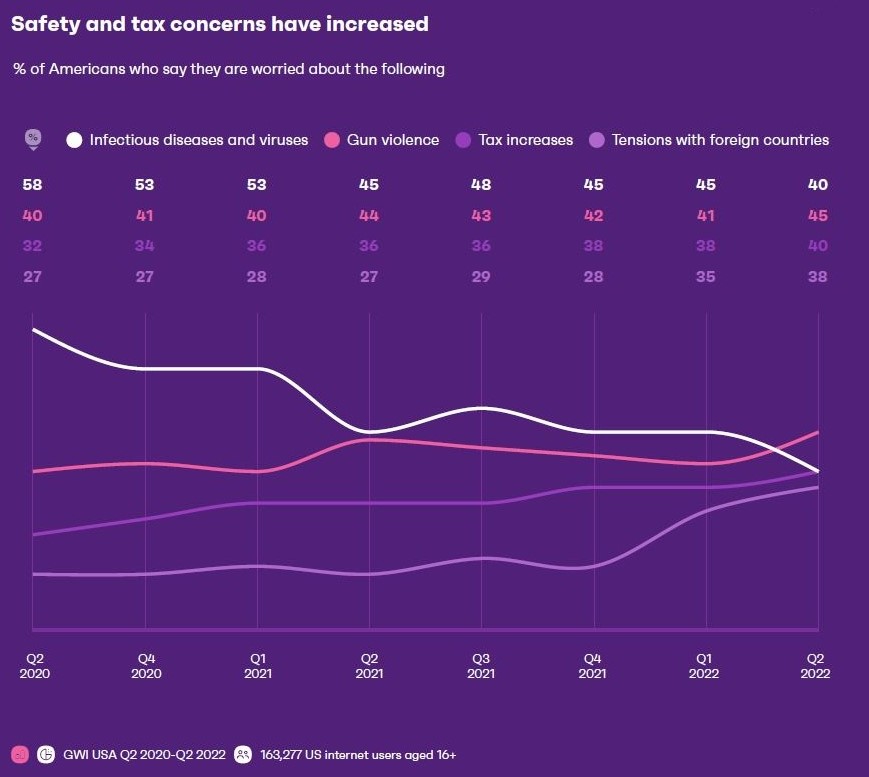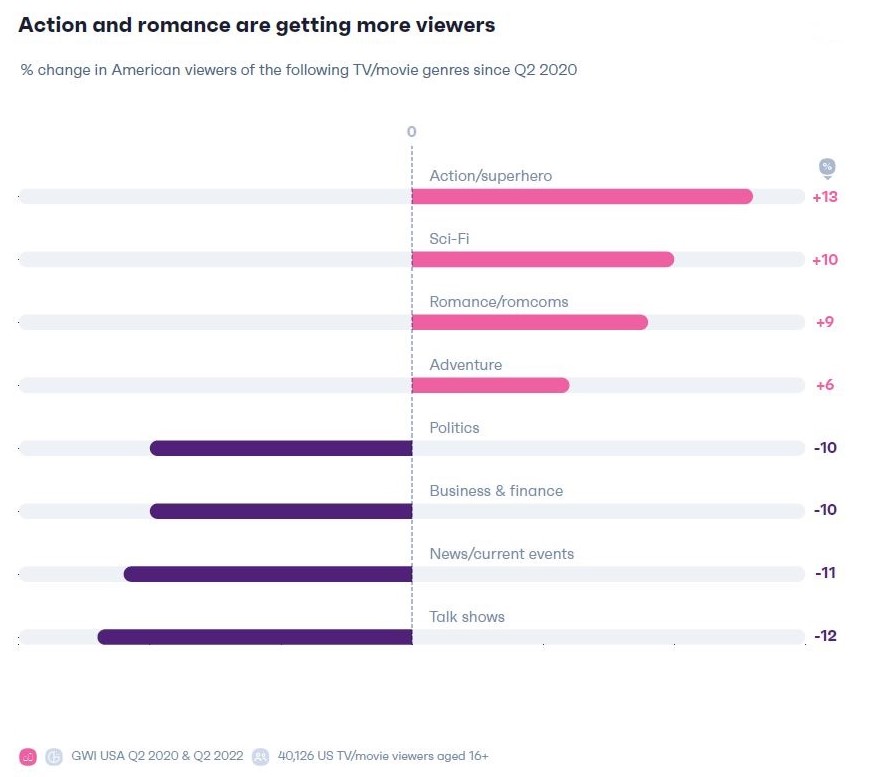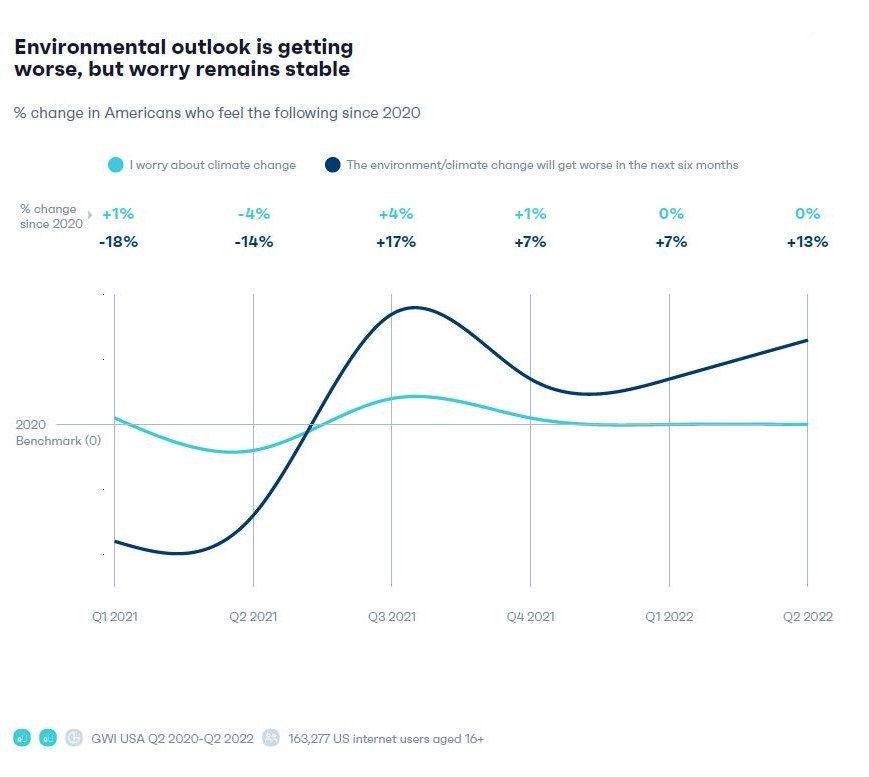
TL;DR
- Just out of the pandemic, Americans are dealing with a cost of living crisis and security concerns — and it’s taking a toll. Most people aren’t happy and that means the American Dream is as far away as it’s ever been.
- Market researcher GWI polled thousands of US consumers to uncover the subjective side of how they really feel about these crises and what are they doing differently as a result. It does not make for comforting reading.
- One impact is that while Americans are concerned about issues from climate change to equal rights and Roe vs. Wade, they are avoiding news and favoring the happy endings of formulaic action and romance shows.
READ MORE: The biggest US consumer trends for 2023: A marketer’s guide (GWI)
Americans are lowering their ambitions, trading an appetite for success with more modest goals. If it’s not the death of the can-do American dream it is at very least one which for most people has modest prospects.
Across virtually all areas of a new research report into consumer trends in the US — “The biggest US consumer trends for 2023: A marketer’s guide,” from market researcher GWI — it finds signs of withdrawal as households count the cost of rising inflation and a macro geopolitical climate fraught with anxiety and crisis.
Here’s the headline: Americans are getting worried about their financial security. Chief research officer Jason Mander notes that 51% of the nation’s consumers believe that the US economy will get worse in the next six months. Not just that, but confidence in personal finances looks to be waning too.
Consumers have become more price-conscious about everyday expenses and, since Q2 of 2021, use of apps to track spending has increased by 9%. Budgeting is back on the menu.
More than half of Americans wish the US government did more to help social justice causes, and only 36% believe that positive progress is being made.
Lockdowns have reminded consumers of how important personal relationships are. Thirty-four percent say that being present for family and friends is their most important goal in life, an increase of 7% from last year. At the same time, the kind of YOLO (you only live once) attitude we saw when lockdowns were lifted is disappearing.
Having a goal of “challenging myself” is down 8% and “trying new things” is down 11%.
According to Mander, when it comes to work, “boundaries are being set, and career goals have been redefined to fit the ‘I work to live, not live to work’ narrative. And with good reason, as US workers face some of the highest levels of burnout and being overworked.”
Striving for simplicity has led some to make big changes to their working life. Time away from a traditional nine-to-five has allowed workers to explore other options, and the number who work while on the road or traveling has increased by 38% since Q3 of 2021.
“The search for the simple life is as much a cultural trend as it is an economic one,” and brands need to understand this, Mander urges.
For example, “Influencers could benefit from turning over a new leaf and branding themselves as a ‘genuinflencer,’” he suggests. The number of Gen Zs who say that following influencers is a top reason for using social media has dropped 22% since Q2 of 2021. Americans of all ages are also less likely to agree that social media is good for society.
Read It on Amplify: Charting the Influence of… Influencer Culture
Read It on Amplify: These Are the Social Media Trends That’ll Impact Your Business
But interest in influencers is still there and growing, increasing by 16% year-over-year — and it will probably continue to grow as long as the content shared shifts from aspirational to inspirational.
“The number of Gen Z who use social media to find inspiration is up 12%. They’re just less likely to be finding inspiration through chasing someone else’s dreams.”
Some more alarming figures from the report: 20% of Americans say they’ve experienced anxiety regularly or often, up 32% from two years ago. Many are seeking solace in TV content to escape.
Related is a loss of interest in TV news. With the economic and security crises going on, Americans are trying to avoid it, and any anxiety it may bring on.
Most Americans view climate change as a real threat, but Mander suggests that in 2023 they may, paradoxically, bury their heads in the sand.
“They’ll still expect brands to take action, but will likely be less willing to hear about it in the news and on social media.”
What’s playing instead? Action/superhero movies for one. This isn’t a surprise as Marvel movies have made over $10 billion in US box office revenue, and Marvel accounts for four of the seven most watched shows on Disney+.
Mander provides additional context to this reasoning: “Americans see their action shows and movies as a cathartic experience, knowing good will almost always overcome evil.”
Americans are also in the mood for love. “Times of economic hardship make romantic comedies a particularly popular genre — up 9% in popularity in the last two years. Like action movies and true crime podcasts, these movies and shows are full of clichés and tropes, but almost always, the characters resolve their issues and come together for a happy ending.”
These more formulaic genres are opposites to the world Americans find themselves in. “People are struggling to make ends meet. Safety seems to be at an all-time low both at home and abroad, and tax hikes still weigh heavily on the mind. And they can’t do much about it.”
So, what can they do? Turn on the TV and select the movie or show that they know will take them through an emotional ride, ultimately ending well for the good guys.






